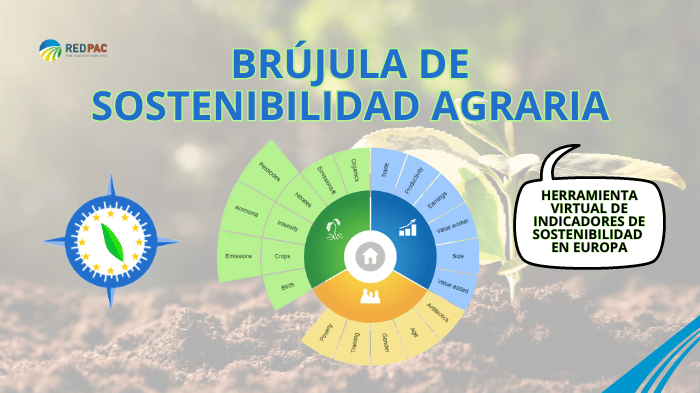
20 de June de 2024
Dinamización rural
Cambio climático y gestión de recursos naturales
The "Agricultural Sustainability Compass" compiles some of the key parameters of agricultural activity in three of the basic dimensions of agriculture: economic, social, and environmental performance.
- The tool is called “Agri Sustainability Compass” and brings together 20 key indicators to detect the degree of sustainability in the agricultural sector and in rural areas.
- The 3 dimensions in which the indicators are shown are economic performance, social performance, and environmental and climate performance.
- The information is taken from the European Union's "Agri-Food Data Portal" and represents current trends in agricultural activity.
It's obvious today that the entire agri-food sector is working to address the difficult balance between progress and prosperity and respect for the environment—in other words, working towards sustainability . The Common Agricultural Policy ( CAP ) plays a key role in supporting European agriculture's transition to a more sustainable approach. The CAP 2023-2027 aims to strike a balance between economic, environmental, and social sustainability for the benefit of farmers, rural areas, and European society as a whole.
The European Commission ( EC ) has therefore launched an interactive tool offering clear and understandable information on sustainability in agriculture: the AgriSustainability Compass , which includes some of the key parameters of agricultural activity today. This data comes from the Agri -Food Data Portal . and the tool synthesizes and compares them with past agricultural activity, for easy identification of current agricultural progress.
Thus, the Compass brings together 20 key indicators—in economic, environmental, and social sustainability—that help understand the current state of the activity and its evolution to date.
Indicators and trends
The “Agricultural Sustainability Compass” is an interactive tool that shows the development of 20 key indicators in three of the basic dimensions of agriculture:
- Economic performance : Data collected sheds light on how the sector is performing economically today and in the past. These include parameters such as:
- The “balance of trade”, which assesses competitiveness
- “Agricultural productivity”, which measures efficiency
- “Comparing income with average wages”
- The “net added value per worker”
- The “average farm size”, which reflects the evolution of income, labor productivity and structural changes within the agricultural sector
This information reflects the economic reality of farmers in the European Union.
- Social performance : The social sustainability of agriculture relates to concepts such as justice, connectivity, diversity, and quality of life:
- The "Age-based ratio of farm managers" and the "Proportion of farms managed by women" reflect concerns about generational change and gender equality.
- The indicators “Training of agricultural managers” and “Poverty rate in rural areas” provide information on access to education and the risk of poverty within rural areas.
- "Antibiotic use per animal" is relevant to the risk of antibiotic resistance
- Environmental performance : As a land-based activity, agriculture is linked to the environment. Climate balance depends on agricultural activity that respects resources and the ecosystem, retains carbon in the soil, and limits emissions:
- The Farmland Bird Index, Crop Diversity Index, and Nitrates in Groundwater Index assess biodiversity, agricultural practices, and water pollution.
- The indicators for “pesticides,” “organic farming,” “ammonia” emissions, and “greenhouse” gas emissions track the sector’s environmental impacts and sustainable practices that can be applied in other areas.
Sustainability in the new CAP
Most of the indicators included in the Compass are also part of the CAP indicators , which are used to assess whether the CAP is helping the agricultural sector make the transition to greater sustainability. In line with its transparency and monitoring requirements, the European Commission has launched multiple online dashboards on the content and ambition of the approved CAP Strategic Plans.









